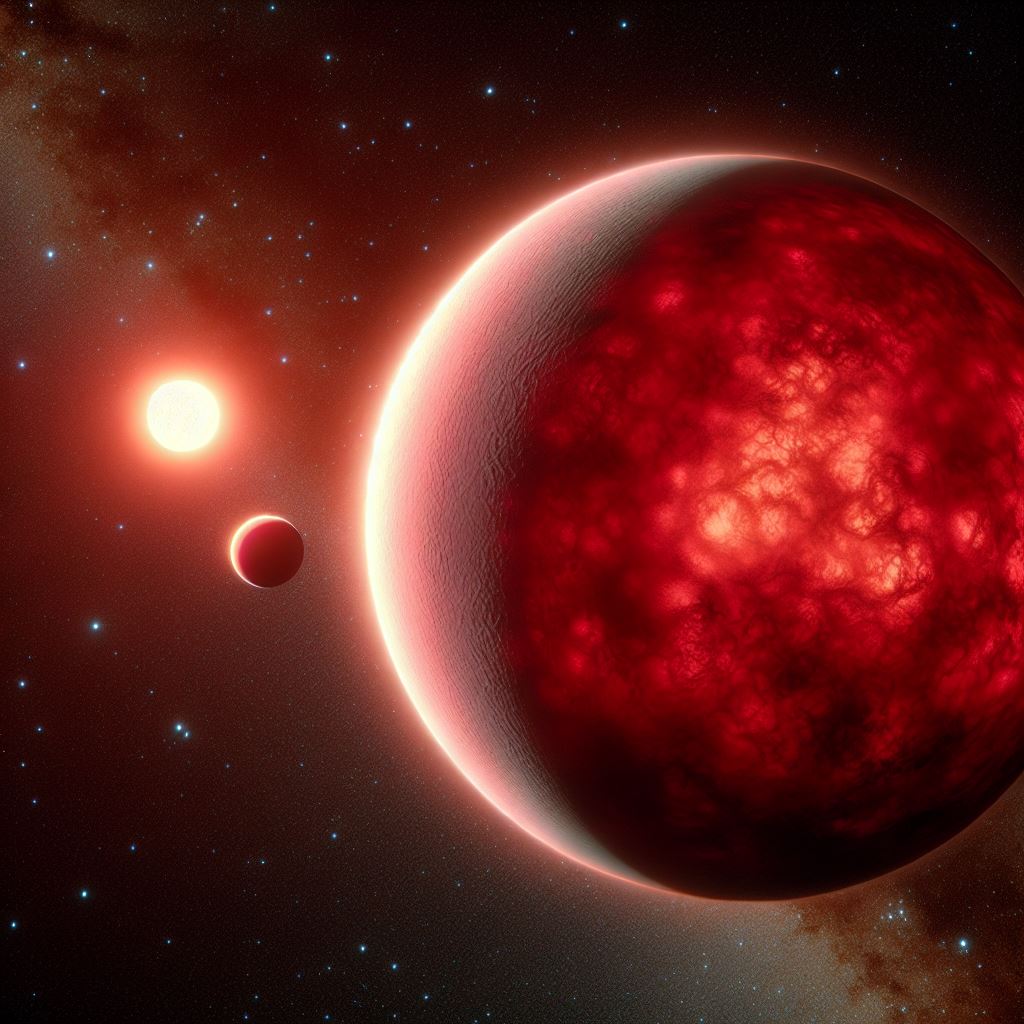In a discovery that’s shaking up our understanding of planetary formation, astronomers have identified a gas giant orbiting a star so small, it was previously thought incapable of hosting such a planet. Meet TOI-6894b, a world that defies the rules.

🔭 A Giant Around a Dwarf
TOI-6894b orbits a red dwarf star named TOI-6894, located hundreds of light-years from Earth. Red dwarfs are the most common type of star in our galaxy, but they’re also the smallest and coolest. TOI-6894, in particular, is only about 20% the mass of our Sun—a cosmic lightweight.
Yet, orbiting this tiny star is a gas giant roughly the size of Saturn, but with only half its mass. This makes TOI-6894b a low-density planet, often referred to as a “puffy” planet due to its bloated atmosphere.
🧪 Breaking the Rules of Planet Formation
According to the widely accepted core accretion model, gas giants form when a solid core—about 10 times the mass of Earth—accumulates enough gas from the surrounding protoplanetary disk. But small stars like TOI-6894 aren’t expected to have disks massive enough to form such giants.
This makes TOI-6894b a cosmic anomaly. Its existence suggests that either:
- Planet formation is more efficient than we thought, or
- There are alternative formation pathways we haven’t yet understood.
🌍 A Hot, Fast-Orbiting World
TOI-6894b is a hot Jupiter-like planet, completing an orbit around its star in just 3 Earth days. This close proximity means it’s likely tidally locked, with one side always facing its star—scorching hot—while the other remains in perpetual darkness.
🔬 A Window into Alien Atmospheres
Despite its extreme environment, TOI-6894b is a prime candidate for atmospheric studies. Its low density and large size make it easier for telescopes like the James Webb Space Telescope (JWST) to analyze its atmosphere. Scientists hope to detect molecules like methane, ammonia, and water vapor, which could offer clues about its formation and evolution.
🚀 Why TOI-6894b Matters
The discovery of TOI-6894b challenges long-held assumptions and opens new doors in exoplanet science. It reminds us that the universe is full of surprises—and that our models, while useful, are still evolving.
As astronomers continue to explore the skies, TOI-6894b stands as a bold reminder: sometimes, the universe doesn’t follow the rules.




Cool article dad
Cool article dad very cool